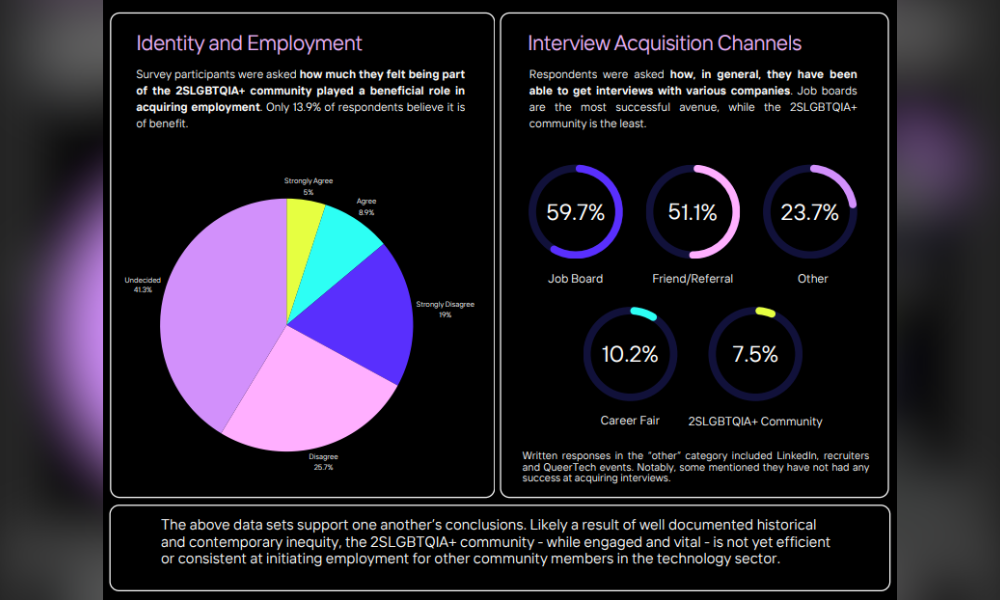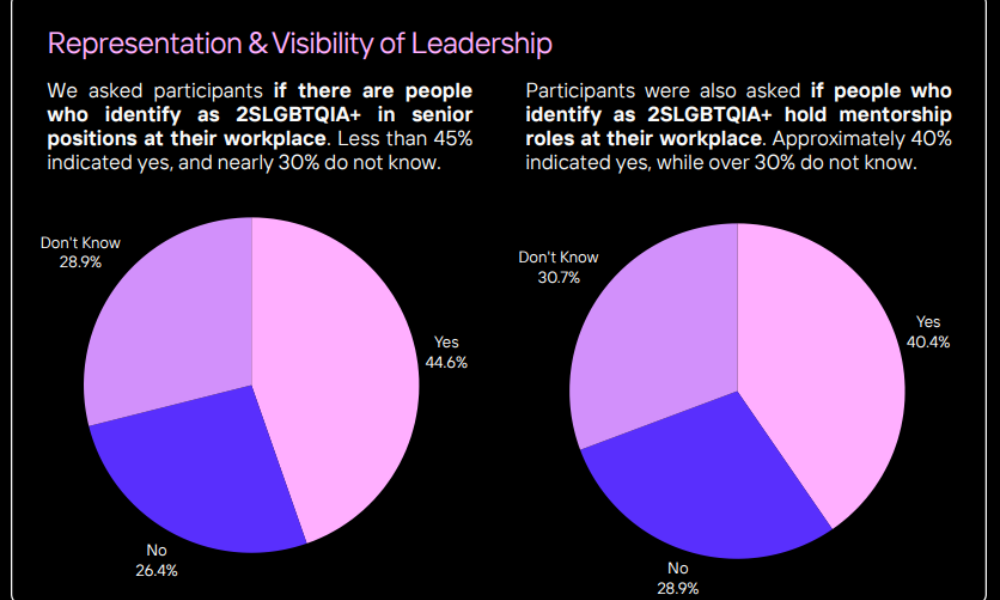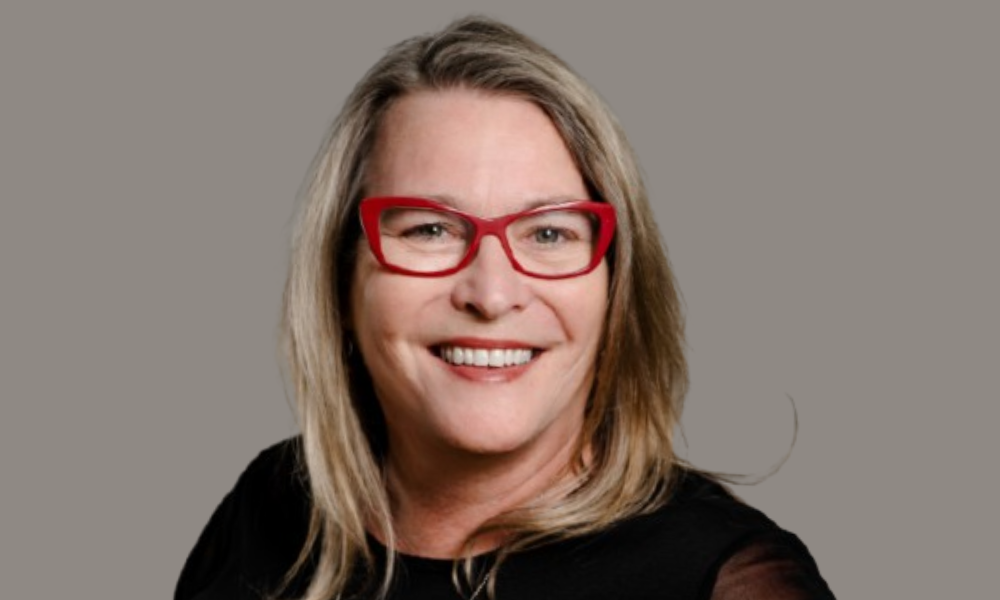'That allyship enables other people to advocate for you, that I've never experienced before': TD senior UX designer on how to hire LGBTQIA+ talent right

The first compiled data that targets the LGBTQIA+ community in STEM in Canada has been released, and it reveals how much work there is yet to be done.
Queering the Tech Ecosystem: Barriers and Opportunities Research Report, was conducted by Montreal-based organization QueerTech to fill what it says is “sparse and incomplete” research gaps in Canada, to help stakeholders “better understand hiring and employment experiences, challenges in attracting and retaining queer individuals across the industry, and how to approach and improve these vital, under informed processes.”
Queer employees in tech (and other industries) are facing numerous barriers in Canadian workplaces, the report found. For example, compared to heterosexual men, gay men experience wage penalties in the form of fewer hours worked, and lesbian women receive wage premiums – because they work more.
Bisexual individuals work the least number of hours, and earn less than both homosexual and straight coworkers.
Figure the bumps out first: hiring LGBTQIA+ tech employees right
Canadian HR Reporter spoke with Charlie Stableford, Senior UX Designer at TD in Vancouver, about their experience being hired and onboarded there and what a crucial difference it made in the overall experience and ultimately their success in the first year of their employment at TD.
“When I was interviewing with TD, maybe lots of queer people feel this way, maybe they feel the exact opposite way, but I had a rather low bar,” Stableford says. “I was like, please use my pronouns – the bar was set very low.”
Stableford explains how, prior to being onboarded at TD, arrangements had already been made to make the process smooth, such as ensuring their chosen name would be used on all internal platforms instead of their legal name, and appointing another nonbinary TD employee who had had a similar experience to Stableford, to act as a touchpoint and to explain the inclusive practices and policies – an experience which Stableford describes as “very on the nose, but just the right amount of on the nose.”
“I really needed to hear that from another person that really did look and feel a lot like my experience at the time,” Stableford says. “And then I found out later that that same hiring manager had figured out all the bumps for me … and I really love that I didn't know about that. She knew enough that she didn't have to come to me and say, ‘Hey, what do you want?’”

Hiring process crucial in LGBTQIA+ inclusivity in tech
Naoufel Testaouni, QueerTech CEO and co-founder, started the organization in 2016 in Montreal, when he noticed a lack of visibility of LGBTQIA+ individuals in the tech sector in the city. From initial meetups in Montreal, the organisation has grown to a nation-wide nonprofit advocating for queer leadership in STEM industries.
“Effective HR policies are key to fostering an inclusive workplace. Implementing comprehensive policies, including anti-discrimination protections and domestic partnership benefits, is crucial,” Testaouni says, explaining that the hiring process is the first step to inclusivity, as it is that first barrier that many queer and trans people find difficult – or impossible – to surmount.
“Almost one out of two queer people who go in to an interview process in tech have had a negative experience, basically – either they felt they've been discriminated against, or they weren't sure, but something was not working…there is a lot of bias in the interview process.”
Informed allyship an essential aspect of welcoming LGBTQIA+ employees into tech
As the report reveals, 38 percent of surveyed organisations didn’t have explicit gender identity and expression policies. Further, many organisations did not have research-backed tools to handle transitioning employees’ journeys, such as with changing names and gender markers, or having staff trained to handle those requests or others like it.
To be truly welcoming to LGBTQIA+ employees, Stableford and Testaouni both stress how important it is to have not only diverse representation on hiring panels, but that allies on hiring teams are intentionally educated prior to any queer, trans or nonbinary individual being onboarded. This prevents the new hire from either needing to advocate for themselves or from being stuck in the role of educator.
 “I felt like the way that [TD’s DEI] training was framed, it didn't feel like an afterthought. It wasn't an add-on at the end of the conversation,” says Stableford. That authentic follow-through from DEI policies was again put into action when yet another manager informed Stableford that they’d gone ahead and fixed another error where their legal name was being used incorrectly.
“I felt like the way that [TD’s DEI] training was framed, it didn't feel like an afterthought. It wasn't an add-on at the end of the conversation,” says Stableford. That authentic follow-through from DEI policies was again put into action when yet another manager informed Stableford that they’d gone ahead and fixed another error where their legal name was being used incorrectly.
“Again, it was like, ‘Oh, that's a second person that just has the education, doesn't have to come to me to confirm my need to advocate for myself. They knew that they would have to do that for me,” says Stableford.
“And I think that that is a really great framework, and kind of shows also how, in my opinion, from what I've seen, how TD is set up in a way that allyship enables other people to advocate for you, that I've never experienced before within a company that I've worked for.”
Sponsorship, mentorship and belonging: programs for queer inclusivity in tech
The report notes that queer and LGBTIA+ Canadians are disproportionately affected by chronic health conditions and disabilities, which impact their employment outcomes and opportunities as well as their overall well-being.
“Creating community spaces and providing resources, as well as offering mentorship, can significantly enhance the sense of belonging for queer employees,” said Testaouni.
Additionally, LGBTQIA+ workers report lower levels of general and mental health and higher stress; the report emphasizes the importance of belonging for queer workers. Creating community spaces, providing queer resources, offering mentorship, and facilitating networking opportunities are key strategies for fostering a sense of belonging.
But how can an organisation support queer employees if they can’t get in the front door in the first place, due to all of these societal and systemic barriers?
Sponsorship, says Testaouni.
“Everyone wants to create mentorship programs, but we also talk to them about creating sponsorship programs,” says Testaouni.
“Because the reality is, if there is not enough of us in the org structure, then we need allies, and we need people who really believe in diversity and see it as a way to impact the bottom lines, to create sponsorship programs, and sponsor younger generations, so we can grow them, we can train them, we can create open doors for them in the organizations so they can move up.”




